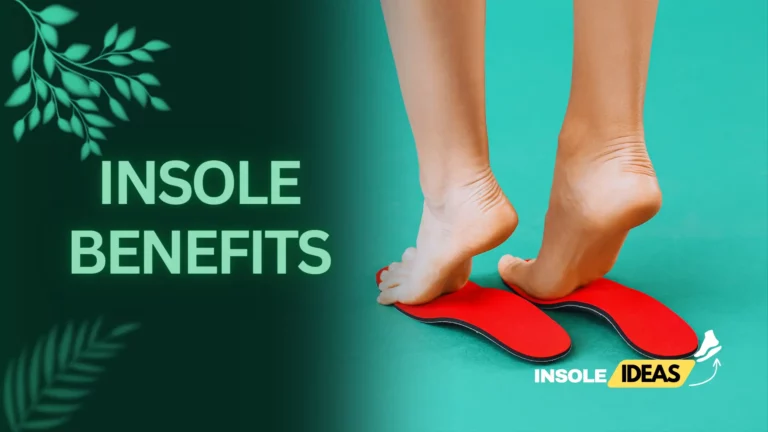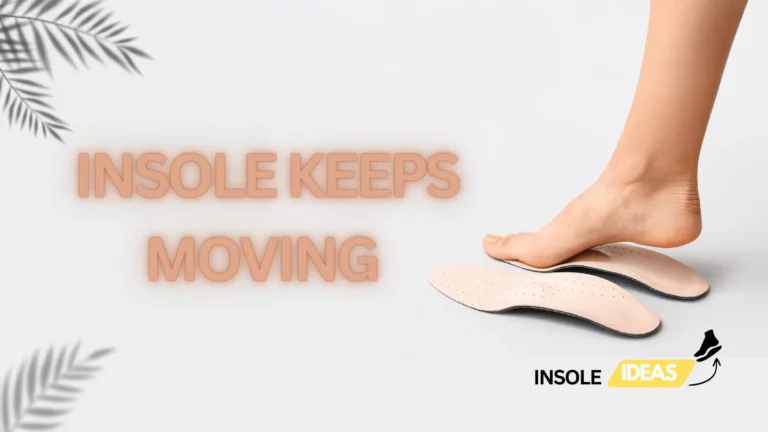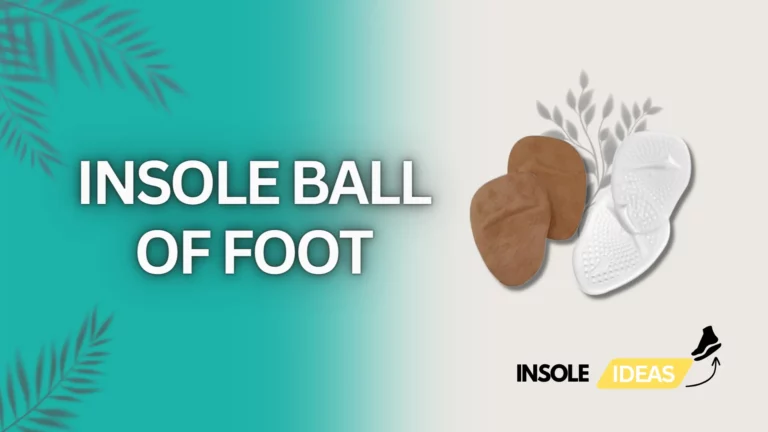Exploring World of Recommended Insoles: A Guide by Doctors
Insoles are more than just cushioning for your shoes; they play a crucial role in supporting your feet and promoting overall foot health. Often overlooked, the right pair of insoles can make a significant difference in comfort and mobility, especially for individuals who spend long hours on their feet or suffer from foot-related issues. This guide, endorsed by medical professionals, delves into the world of recommended insoles, shedding light on their importance and impact.
Importance of Insoles
Insoles serve as a foundation for your feet, providing support, stability, and cushioning to alleviate pressure and reduce strain during various activities. In particular, for people with high arches or flat feet, they can assist avoid discomfort and damage by helping to distribute weight evenly over the foot. Moreover, quality insoles can enhance the fit of shoes, improving overall posture and reducing the risk of developing foot-related problems over time.
Impact on Foot Health
The health of your feet directly influences your overall well-being, as they bear the brunt of daily activities and movement. Ill-fitting shoes or lack of proper support can lead to a myriad of issues, including plantar fasciitis, arch pain, and even joint problems. By investing in suitable insoles, individuals can mitigate these risks and promote better foot alignment, circulation, and comfort throughout the day.
Understanding Foot Anatomy
Before delving into the realm of insoles, it’s essential to grasp the intricate anatomy of the foot, which comprises several key components working in harmony to support body weight and facilitate movement.
Key Components
The foot consists of various interconnected structures, each serving a distinct purpose in maintaining balance, absorbing shock, and propelling forward motion.
Arch
The arch of the foot is a vital feature that helps distribute weight evenly and absorb impact during walking, running, or standing. There are three primary types of arches: high, medium, and low, each requiring specific support to prevent strain and discomfort.
Heel
The heel bone, or calcaneus, forms the foundation of the rearfoot and provides stability during weight-bearing activities. Proper cushioning and alignment in this area are crucial for absorbing shock and preventing conditions like plantar fasciitis and heel spurs.
Ball of the Foot
Located just behind the toes, the ball of the foot bears a significant portion of body weight and facilitates push-off during propulsion. Adequate cushioning and metatarsal support can alleviate pressure and prevent conditions such as metatarsalgia and Morton’s neuroma. Understanding these key components lays the groundwork for selecting the most suitable insoles tailored to individual foot anatomy and needs.
What Do Doctors Recommend?
When it comes to foot health and the use of insoles, insights from medical professionals are invaluable. Orthopedic experts and podiatrists provide distinct viewpoints based on their training and experience, pointing people in the direction of the best options for their particular need.
Podiatrists’ Insights
Podiatrists are medical specialists who focus on the identification, management, and avoidance of problems related to the feet and ankles. They play a pivotal role in evaluating foot biomechanics, gait abnormalities, and musculoskeletal issues, offering tailored recommendations to address diverse foot-related concerns.
Podiatrists emphasize the importance of customizing insole selection based on individual foot anatomy and lifestyle factors. Through comprehensive evaluations, they identify underlying issues such as overpronation, supination, or structural abnormalities that may contribute to foot pain or dysfunction. By prescribing orthotic devices or recommending suitable over-the-counter insoles, podiatrists aim to alleviate discomfort, enhance stability, and optimize foot function for improved mobility and overall well-being.
Furthermore, podiatrists emphasize the significance of proper footwear in conjunction with supportive insoles. They educate patients on selecting shoes with adequate arch support, cushioning, and roomy toe boxes to accommodate foot shape and prevent common ailments like bunions, corns, and calluses. By incorporating preventive measures and proactive foot care strategies, podiatrists empower individuals to maintain optimal foot health and minimize the risk of injury or degenerative conditions over time.
Orthopedic Specialists’ Perspectives
Specialists in orthopedics are trained in the diagnosis and management of musculoskeletal conditions, especially those pertaining to the lower limbs and foot. Drawing upon their expertise in biomechanics and orthotic therapy, orthopedic specialists offer comprehensive assessments and evidence-based interventions to address a wide range of foot-related issues.
Orthopedic specialists emphasize the importance of addressing underlying biomechanical imbalances and structural abnormalities that contribute to foot pain and dysfunction. They detect particular areas of concern, such as joint misalignment, ligament instability, or muscle weakness, via sophisticated imaging techniques and functional evaluations. Based on these findings, therapy options and therapeutic treatments are made.
Assessing Your Foot Type
Selecting the best insoles to support your feet and encourage comfort throughout daily activities requires an understanding of your foot type. By assessing factors such as arch type and pressure points, individuals can make informed decisions to address specific foot-related concerns effectively.
Understanding Your Arch Type
The arch of the foot plays a pivotal role in weight distribution, shock absorption, and overall foot mechanics. You may do a quick wet test to find your arch type, or you can get a more thorough assessment by speaking with a medical specialist.
- High Arch: Characterized by a pronounced curve along the inner side of the foot, high arches may predispose individuals to issues such as supination and insufficient shock absorption. Insoles with firm arch support help stabilize the foot and distribute pressure evenly across the sole.
- Medium Arch: Moderate arches exhibit a natural curvature that provides adequate support and flexibility for most activities. Insoles with moderate arch support and cushioning are typically suitable for individuals with medium arches, offering a balance of stability and comfort.
- Low Arch (Flat Feet): Flat feet lack significant arch height, causing the entire sole to make contact with the ground during weight-bearing activities. Supportive insoles with robust arch support and cushioning help alleviate strain on the arch and promote proper alignment.
Identifying Pressure Points
Pressure points refer to areas of the foot that bear the brunt of body weight during standing, walking, or running. Identifying pressure points can help pinpoint potential areas of discomfort or vulnerability, guiding the selection of insoles with targeted support and cushioning.
- Heel: The heel is a common site of pressure due to its role in absorbing impact during heel strike. Insoles with ample cushioning and heel cups help attenuate shock and reduce the risk of conditions such as plantar fasciitis and heel spurs.
- Ball of the Foot: Also known as the forefoot, the ball of the foot experiences significant pressure during push-off and propulsion. Metatarsal pads or cushions incorporated into insoles can alleviate discomfort and prevent conditions like metatarsalgia and Morton’s neuroma.
- Arch: Depending on your arch type, certain areas along the arch may experience heightened pressure or strain. Insoles with contoured arch support help distribute weight evenly and reduce fatigue during prolonged standing or walking.
Features to Look for in Recommended Insoles
When shopping for insoles, several key features warrant consideration to ensure optimal comfort, support, and breathability for your feet.
Arch Support
Maintaining optimal foot alignment, lessening the load on the arch, and avoiding overpronation or supination all depend on arch support. Insoles with customizable arch inserts or firm arch support cater to diverse arch types and provide stability throughout various activities.
Cushioning Material
The choice of cushioning material significantly impacts comfort and shock absorption capabilities. High-quality insoles utilize materials such as memory foam, gel inserts, or EVA foam to provide cushioning and reduce pressure on sensitive areas of the foot, enhancing overall comfort and impact absorption.
Breathability
Breathability is essential for maintaining a healthy foot environment and preventing moisture buildup, which can lead to odor and fungal infections. Insoles with perforations or moisture-wicking properties promote airflow and ventilation, keeping feet dry and comfortable throughout the day. Choosing insoles with breathable materials helps mitigate discomfort and maintain foot hygiene, especially during prolonged wear.
Brands Recommended by Healthcare Professionals
When it comes to choosing the right insoles for foot support and comfort, healthcare professionals often recommend specific brands known for their quality, durability, and effectiveness in addressing various foot-related issues. Among the brands endorsed by podiatrists and orthopedic specialists, three notable names stand out: Dr. Scholl’s, Superfeet, and Powerstep.
Dr. Scholl’s
Dr. Scholl’s is a renowned brand synonymous with foot care and comfort solutions. With a diverse range of insoles designed to address common foot problems such as arch support, heel pain, and foot fatigue, Dr. Scholl’s offers innovative features such as gel cushioning, arch inserts, and shock absorption technology. Their insoles cater to different foot types and activities, providing reliable support and comfort for everyday wear or athletic pursuits. Trusted by healthcare professionals and consumers alike, Dr. Scholl’s continues to set the standard for accessible and effective foot care solutions.
Superfeet
Superfeet is recognized for its biomechanically engineered insoles crafted to enhance foot support, stability, and performance. Developed with input from podiatrists and sports medicine experts, Superfeet insoles feature proprietary designs and materials optimized for superior comfort and durability. Whether for athletic endeavors, occupational demands, or everyday use, Superfeet offers a range of options tailored to specific foot shapes and activity levels. With a focus on promoting proper foot alignment and reducing strain, Superfeet insoles empower individuals to move with confidence and comfort in any pursuit.
Powerstep
Powerstep specializes in orthotic insoles designed to alleviate foot pain, enhance stability, and improve overall foot function. Utilizing advanced technology and medical-grade materials, Powerstep insoles offer targeted support for conditions such as plantar fasciitis, overpronation, and metatarsalgia. Their ergonomic designs feature deep heel cups, arch support structures, and cushioning layers to optimize comfort and reduce pressure points throughout the foot. Trusted by healthcare professionals and recommended for therapeutic use, Powerstep insoles provide effective solutions for individuals seeking relief from chronic foot ailments and discomfort.
Custom Insoles vs. Over-the-Counter Options
Choosing between custom insoles and over-the-counter options involves weighing various factors, including individual needs, preferences, and budget considerations. Both custom and over-the-counter insoles offer distinct advantages and considerations that individuals should evaluate when selecting the most suitable foot support solution.
Pros and Cons
Custom insoles are tailored to the unique contours of an individual’s feet, providing personalized support and alignment. Crafted based on detailed foot assessments and measurements, custom insoles offer precise correction for biomechanical issues and optimal comfort for long-term wear. However, custom insoles can be costly and require professional fitting, making them less accessible for some individuals.
In contrast, over-the-counter insoles are readily available and affordable options for enhancing foot comfort and support. They offer convenience and versatility, allowing individuals to select insoles based on their specific needs and preferences. While over-the-counter insoles may not provide the same level of customization as custom-made counterparts, they offer effective solutions for addressing common foot ailments and improving overall comfort during daily activities.
Considerations for Custom Insoles
A podiatrist or orthopedic expert, who often provides custom insoles, must conduct a thorough evaluation. During the evaluation process, measurements of foot structure, gait analysis, and biomechanical assessments help determine the optimal design and materials for custom insoles. Factors such as foot type, activity level, and existing foot conditions are considered to ensure the insoles provide adequate support and alignment tailored to individual needs.
Custom insoles offer precise correction for biomechanical issues such as overpronation, supination, or structural abnormalities. By addressing underlying imbalances and providing targeted support, custom insoles help alleviate pain, reduce strain, and improve overall foot function. However, the process of obtaining custom insoles may involve multiple appointments, fittings, and adjustments, which can be time-consuming and costly.
Accessibility of Over-the-Counter Options
Over-the-counter insoles are widely available at pharmacies, shoe stores, and online retailers, making them easily accessible to consumers seeking immediate foot support solutions. They come in various sizes, shapes, and designs to accommodate different foot types and shoe styles. Individuals can select over-the-counter insoles based on factors such as arch type, cushioning preferences, and intended use, making it convenient to find a suitable option for their needs.
Case Studies: Successful Insole Interventions
Insoles play a crucial role in addressing various foot conditions and promoting overall comfort and mobility. Through personalized interventions, patients can experience significant relief and improvement in their foot health. Two illustrative case studies highlight the effectiveness of insole interventions in addressing specific concerns: Plantar Fasciitis Relief and Addressing Flat Feet.
Patient A: Plantar Fasciitis Relief
The tissue that links the heel bone to the toes is called the plantar fascia, and it is frequently inflamed in cases of plantar fasciitis. Patient A, a 45-year-old individual with chronic heel pain, sought relief from debilitating symptoms affecting daily activities.
Patient A was prescribed bespoke orthotic insoles to relieve strain on the plantar fascia and support normal foot alignment after undergoing a thorough assessment by a podiatrist. The insoles featured firm arch support, deep heel cups, and cushioned heel pads to reduce strain and absorb shock during weight-bearing activities.
Over the course of several weeks, Patient A experienced gradual improvement in symptoms, including reduced heel pain and increased mobility. With consistent use of the prescribed insoles, combined with stretching exercises and footwear modifications, Patient A achieved significant relief from plantar fasciitis and regained functionality in daily life.
Patient B: Addressing Flat Feet
The term “flat feet,” or pes planus, describes a situation in which the foot’s arches collapse and the whole sole touches the ground. Patient B, a 30-year-old individual, presented with complaints of foot fatigue, arch pain, and difficulty engaging in physical activities due to flat feet.
Upon consultation with an orthopedic specialist, Patient B underwent a thorough assessment of foot structure and biomechanics, revealing significant overpronation and lack of arch support. To address these issues, Patient B was fitted with semi-custom insoles featuring robust arch support, metatarsal padding, and shock-absorbing materials.
With regular use of the prescribed insoles, combined with targeted stretching exercises and footwear modifications, Patient B experienced notable improvement in foot alignment, stability, and overall comfort. The insoles provided essential support to the arches, redistributed pressure across the foot, and minimized strain on ligaments and tendons, allowing Patient B to engage in activities with greater ease and reduced discomfort.
Tips for Proper Insole Usage
In order to ensure long-term efficacy and comfort, correct usage and maintenance are necessary to maximize the benefits of insole therapies. Incorporating the following tips into your daily routine can enhance the efficacy of insole interventions and promote optimal foot health.
Breaking Them In
New insoles may initially feel stiff or uncomfortable as your feet adjust to the contours and support provided. To facilitate the breaking-in process, gradually increase wear time and avoid prolonged use during the initial period. Wearing the insoles for short intervals each day allows your feet to acclimate gradually, minimizing discomfort and promoting a more comfortable fit over time.
Regular Maintenance
Like any footwear accessory, insoles require regular maintenance to preserve their structural integrity and hygiene. To let the shoes breathe and avoid moisture buildup, take out the insoles from time to time. Use a mild detergent and lukewarm water to clean the insoles gently, avoiding harsh chemicals or excessive scrubbing that may damage the materials. Additionally, inspect the insoles for signs of wear, such as fraying or compression, and swap them out as necessary to keep the best possible support and cushioning.
Knowing When to Replace
Over time, insoles may lose their shape, cushioning, and supportive properties due to regular wear and tear. Pay attention to any changes in comfort, support, or foot pain, as these may indicate the need for replacement. Generally speaking, depending on the frequency and intensity of use, replace insoles every six to twelve months. Investing in high-quality, durable insoles ensures consistent support and comfort for your feet throughout their lifespan.
Integrating Insoles into Daily Life
Incorporating insoles into your daily routine can significantly enhance foot comfort, support, and overall well-being. By choosing the right footwear, integrating insoles into your exercise routine, and adopting long-term foot health strategies, you can optimize the benefits of insole interventions and promote lasting foot health.
Choosing the Right Footwear
Selecting footwear that accommodates your foot type and activity level is essential for maximizing the effectiveness of insole interventions. Choose shoes with ample room in the toe box, adequate arch support, and cushioned midsoles to complement the support provided by insoles. Consider consulting a footwear specialist or podiatrist to ensure proper fit and functionality for your specific foot needs.
Combining with Exercise Routine
Regular physical activity is crucial for maintaining foot health, strength, and flexibility. Incorporating insoles into your exercise routine can help reduce the risk of injury, alleviate strain on the feet, and enhance performance during various activities. Whether walking, running, or participating in sports, ensure your footwear and insoles provide adequate support and stability to optimize comfort and minimize fatigue.
Long-Term Foot Health Strategies
Insoles serve as valuable tools in promoting long-term foot health and preventing common foot ailments. In addition to incorporating insoles into your daily footwear, prioritize foot-strengthening exercises, proper stretching techniques, and regular foot inspections to identify any potential issues early on. By adopting proactive foot care strategies and seeking professional guidance when needed, you can maintain optimal foot function, comfort, and mobility for years to come.
Conclusion
In conclusion, prioritizing foot health is essential for overall well-being and mobility. Through the integration of proper footwear and supportive interventions such as insoles, individuals can address common foot concerns, alleviate discomfort, and enhance quality of life. As highlighted throughout this guide, understanding foot anatomy, selecting suitable insoles, and incorporating proactive foot care strategies are key components of a comprehensive approach to foot health.
Emphasizing Foot Health
Foot health is often overlooked but plays a critical role in daily functioning and overall comfort. People may lower their risk of injury, enhance biomechanical alignment, and avoid common foot disorders by realizing the value of foot care and engaging in supportive treatments. From selecting appropriate footwear to incorporating insoles into daily routines, prioritizing foot health empowers individuals to maintain an active and fulfilling lifestyle.
Encouraging Professional Guidance
While over-the-counter insoles offer accessible solutions for foot support, seeking professional guidance from podiatrists, orthopedic specialists, or footwear experts is invaluable. These healthcare professionals can provide personalized recommendations, conduct thorough assessments, and address specific foot concerns with tailored interventions. By collaborating with professionals, individuals can optimize the effectiveness of insole interventions and receive guidance on long-term foot care strategies tailored to their unique needs.






